The world was starved of one of the greatest and most memorable stories in football last season when Derby County were relegated to League One.
The Rams had been severely impaired by a 21-point ban slapped on the club before the season began. However, much like himself during his playing career, Wayne Rooney instilled a culture of players that were insistent and committed to the cause of climbing an unclimbable mountain.
Derby got close to the top and could see the summit, scathed with thick layers of snow, like a frosty heaven. No feat like this had ever been accomplished in the sport, but unfortunately, it remained that way.
Despite their courage, tenacity and dogged determination, Derby didn’t have the tools to reach the top.
At the end of the campaign, Rooney stood down from his position but within a matter of weeks, the former Manchester United and Everton star had been given a fresh start, taking over DC United in the MLS.
Sitting rock bottom of the Eastern Conference, Rooney is tasked with translating the hope and spirit of Derby to the US capital. In his first game in charge, against Orlando City, the Black and Red were victorious with a 2-1 scoreline.
While it may be a small sample size, Rooney’s first two games in the dugout were quite telling about the tactics he will use in Washington. This analysis piece will be a tactical analysis of Rooney at DC United, looking at his first two games at the helm.
Preferred formation
Simply by watching the first half-hour of DC United’s clash against Orlando on Saturday night, the similarities between Rooney’s Derby and his new side were so blatantly apparent. The signing of Ravel Morrison has facilitated this as well, given that the midfielder understands exactly what the 36-year-old wants from his players in the refined system.
At Pride Park, Rooney primarily opted to use a 4-2-3-1 system which best suited the players at his disposal, using the shape in 42 percent of the team’s matches in the 2021/22 campaign. However, given the side’s difficulties and lack of depth within the squad, the coach was forced to be flexible with his formation choices.
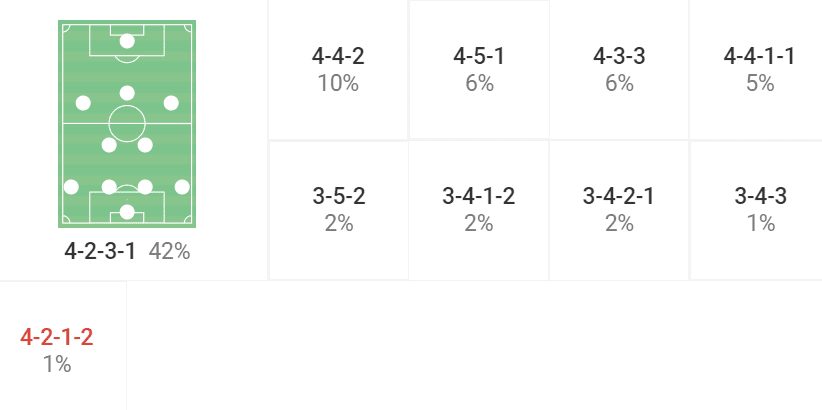
As can also be seen from the above graphic, the 4-4-2, a slightly more conventional sibling of the 4-2-3-1, was deployed in 10 percent of the Rams’ matches.
Rooney’s preferred formations at Derby have been a stark contrast to how DC United have set up during the 2022 MLS season. Under the former coach Hernan Losada and interim boss Chad Ashton, the Black and Red were typically set out in a back three formation, namely the 3-4-3 which was utilised in 39 percent of the team’s games this year.
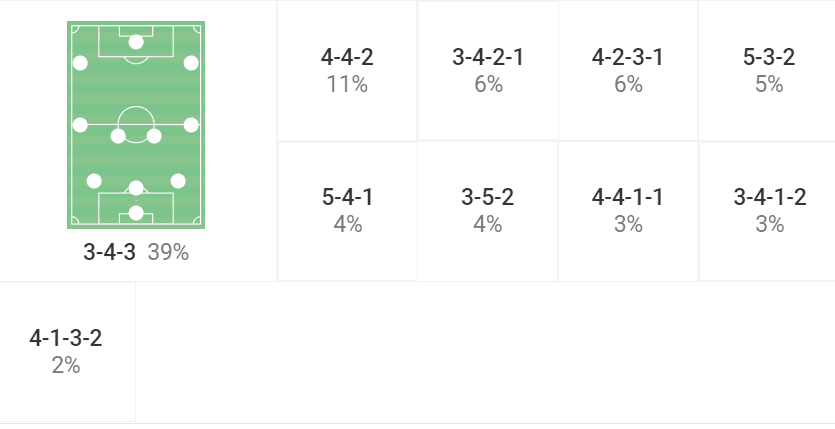
Rooney, ever the advocate for a back four, wanted to change to a system with just two centre-backs and a pair of fullbacks but given that his preferred 4-2-3-1 hadn’t been overly familiar to the DC United players, the 4-4-2 was the next best choice.
DC United were set up in the conventional 4-4-2 against Orlando last Sunday at the Audi Field in Rooney’s first game in charge. However, the young coach switched things up in the next match, opting to go for a more expansive 4-3-3 with Morrison as a single pivot instead of a right-winger.
While DC United were hammered 3-0 in the second game of Rooney’s tenure, their principles were still very similar to the first match as the Englishman is instilling his philosophy on the side.
Use of the goalkeeper and a fluid attacking shape
One of the most distinct aspects of Rooney’s game model was how he wanted his team to play their way out from the deeper areas. From thoroughly analysing Derby and having watched DC United’s two games so far, what sticks out the most from the Black and Red’s tactics is how Rooney uses the goalkeeper.
Using a back four, the former England skipper wants his two centre-backs to split wide and allow the goalkeeper to drop in between them outside the penalty area, creating a three-man first line.
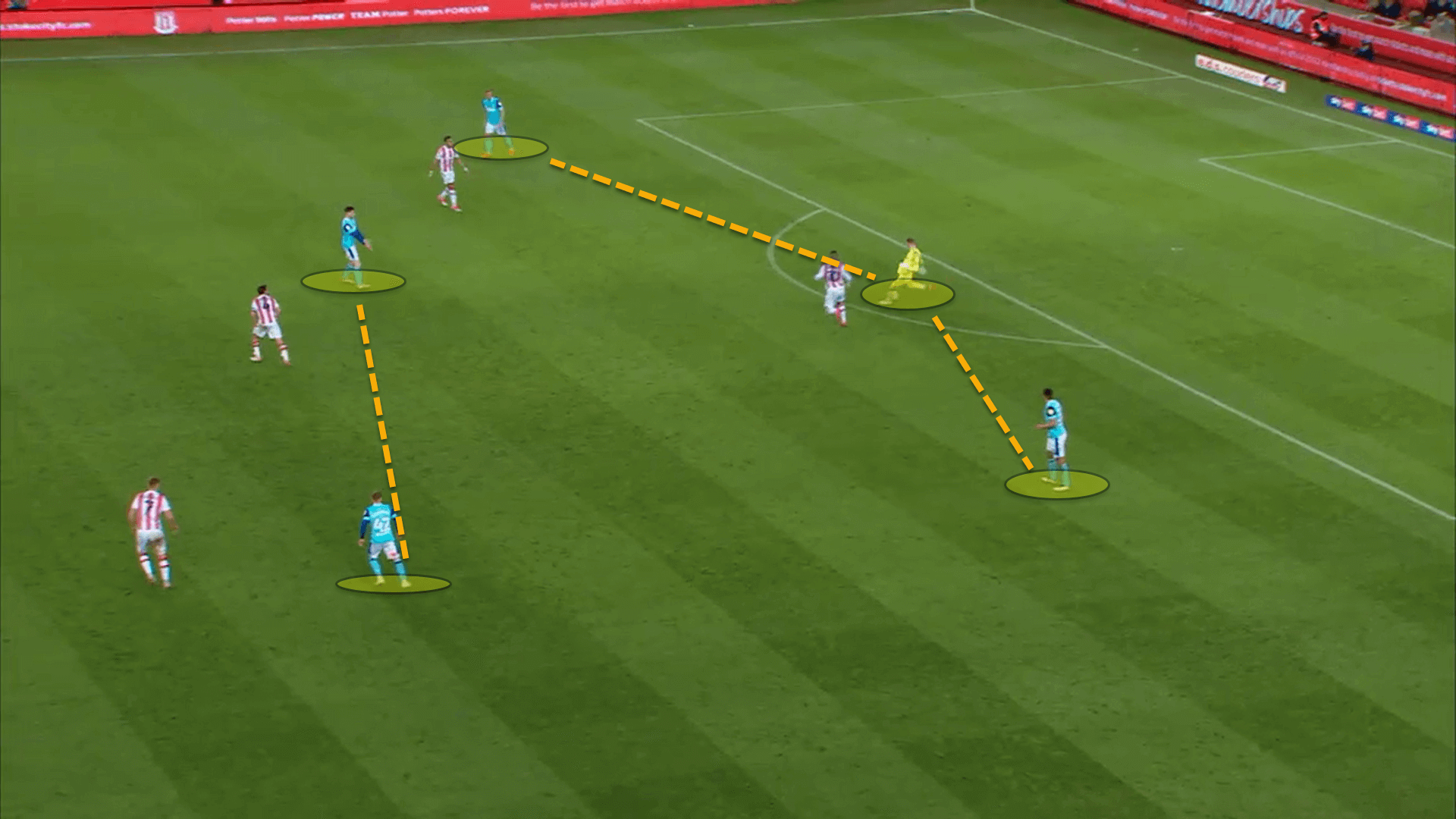
When an opponent is pressing with a two-man first line of pressure, coaches tend to adhere to a very similar blueprint to how to bypass this – creating a plus-one at the back and ensuring they always have a 3v2 to play out of pressure, as can be seen from the above image.
Some teams drop a central midfielder between or beside the centre-backs to create this, while others even keep their fullbacks low. Rooney takes a much riskier approach by positioning his goalkeeper outside the penalty area alongside the two central defenders.
DC United began using this structure in the build-up phase which was highly noticeable merely five minutes into Rooney’s debut.
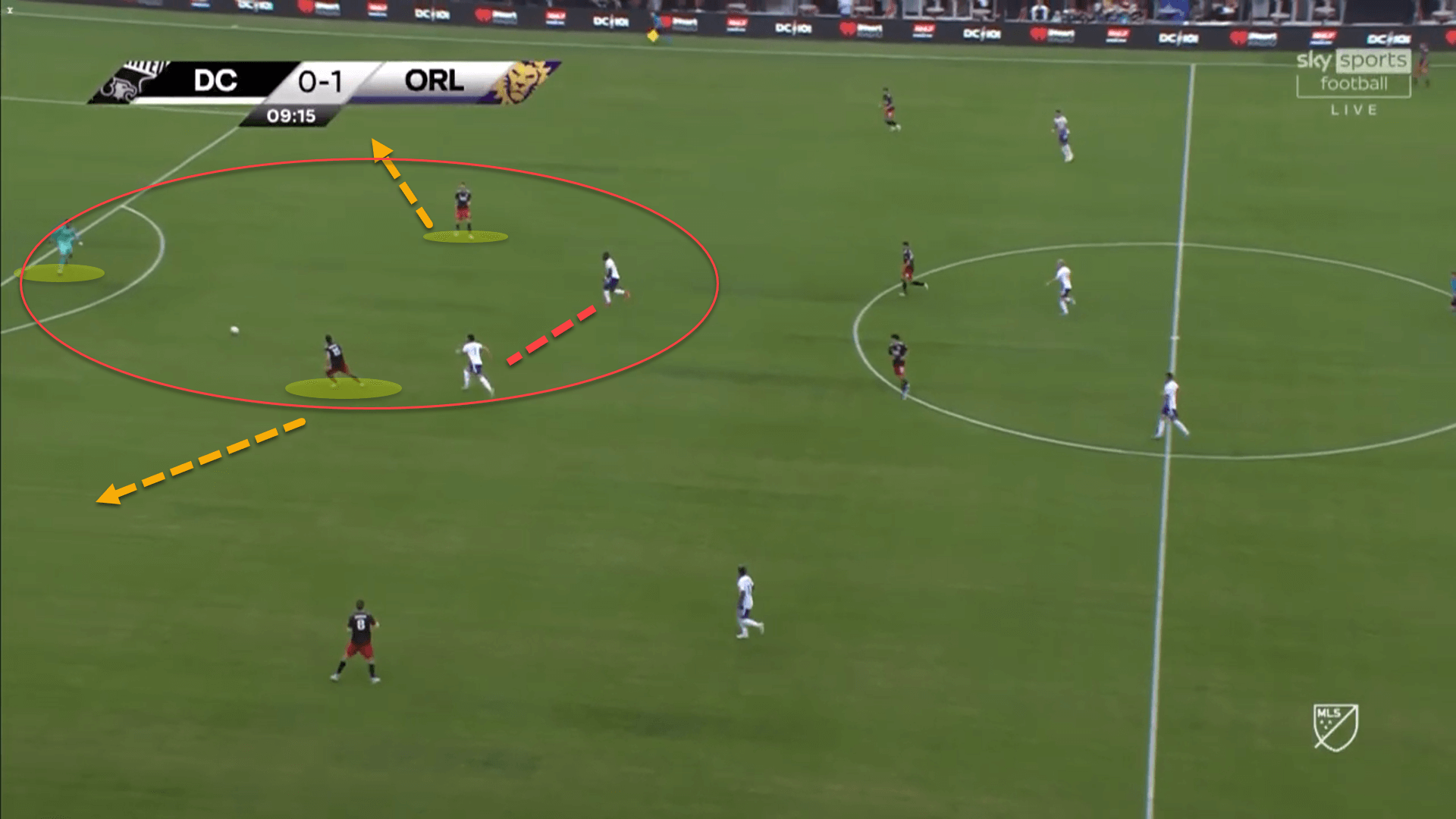
Oscar Pareja’s Orlando were set up in a 4-2-3-1. When pressing high, the number ‘10’ would push up next to the centre-forward to create a 4-4-2 shape with a two-man first line of pressure.
When playing out against this press, DC United’s two centre-backs would split wide to the edge of the area and allow the goalkeeper to drop in between them, forming a 3v2.
Why does Rooney opt to go for this method during his side’s build-up play? Well, the answer is quite simple. The coach wants more outfield players in higher positions. Instead of having a midfielder drop into the defensive line or holding the fullbacks lower, the team can use the goalkeeper while keeping eight outfield players ahead of the ball.
Another noticeable aspect of DC United’s structure in the deeper areas of the pitch was their use of Ravel Morrison, especially in the opening game against Orlando.
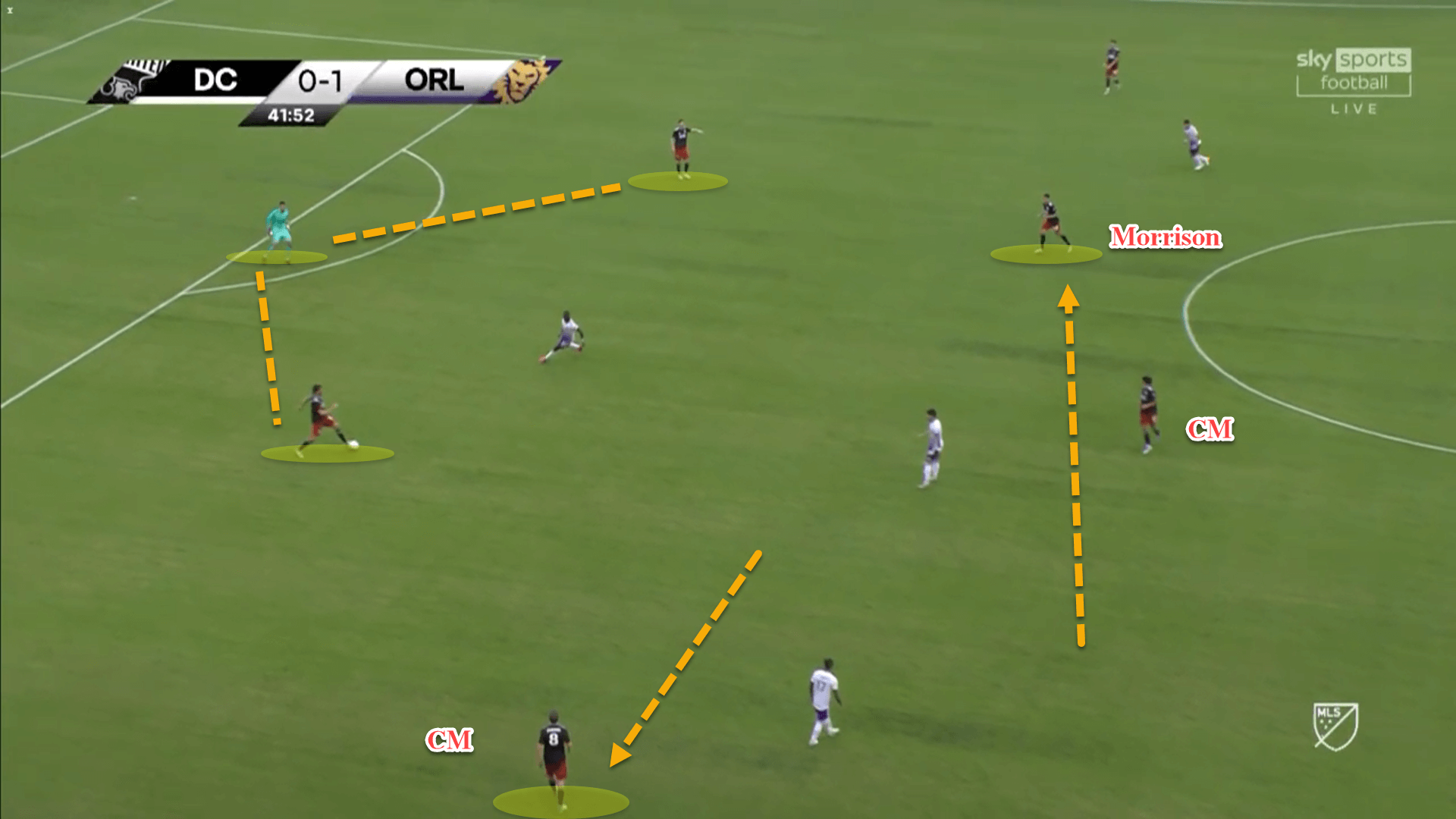
In this bout, Morrison’s starting position was out on the right as a winger. This was predominantly just his role during the defensive phases when DC United would sit in a 4-4-2 defensive block.
However, in possession, the Man United academy product would move inside and occupy the area behind Orlando’s first line of pressure, more commonly known in the analytical world as the pivot space. Nevertheless, in order to create room for Morrison, central midfielder Chris Durkin would drop out to the right flank while the right-back advanced high.
This completed a full wide rotation – the winger inverts, the central midfielder moves wide in his place, and the fullback advances.
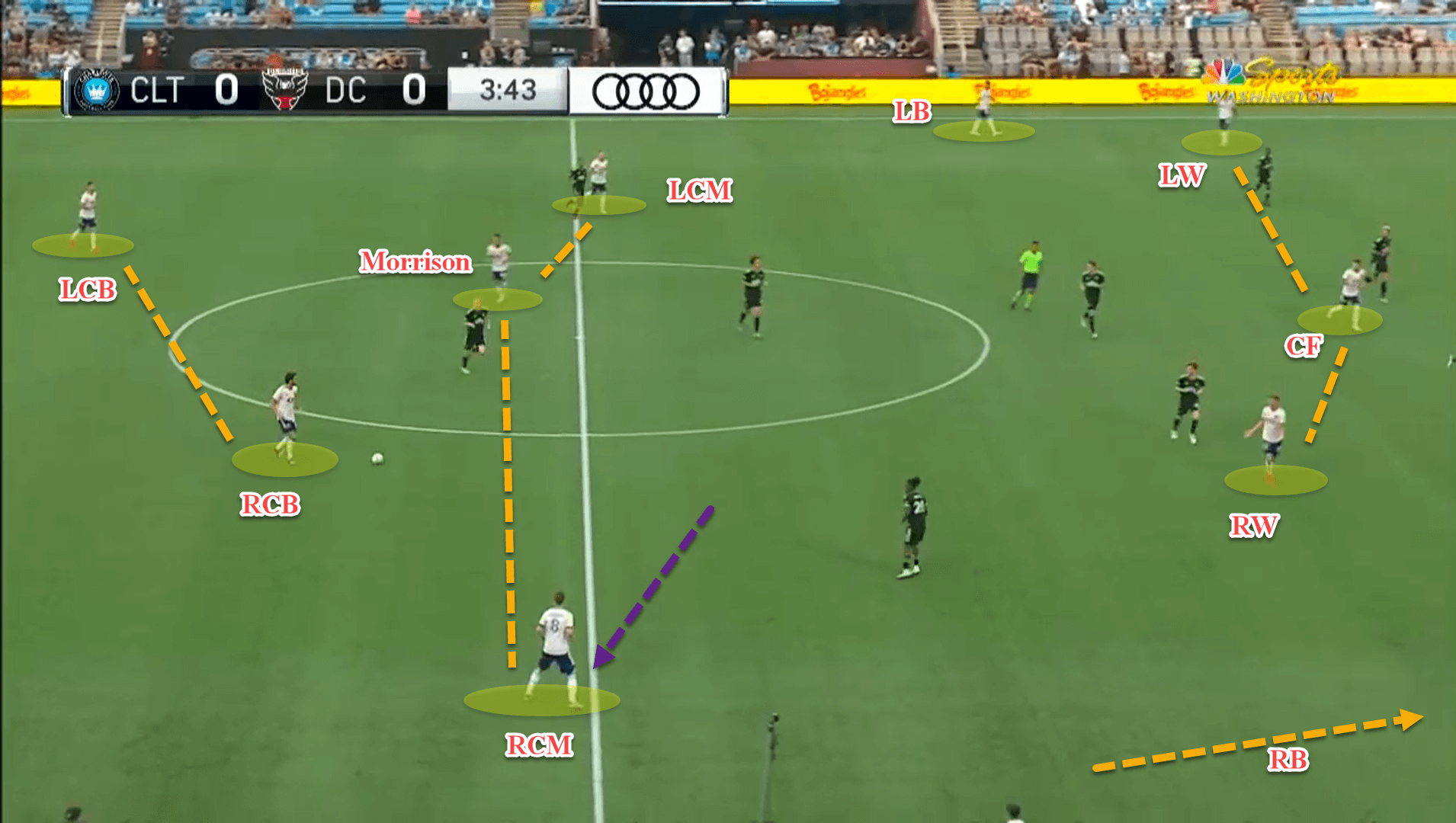
Against Charlotte, in Rooney’s second game in charge, the set-up was altered slightly as the manager had deployed a 4-3-3 with Morrison as the single pivot instead of a 4-4-2 with the midfielder on the right, but it was still pretty similar.
Durkin, who played on the right of a midfield trio, still dropped out as an auxiliary fullback to the right flank. Meanwhile, Morrison and Russel Canouse operated in the pivot space.
Instead of having Morrison start out wide and drift inwards, rotating with the right-back and central midfielder, Rooney just started his former Manchester United teammate as the lone pivot, although the rotation between Durkin, the right-winger and the right-back still took place on the right side.
DC United’s issues in possession
Having an exciting, fluid system and shape in possession with plenty of progressive passing options is a wonderful idea theoretically. However, what good is it if you cannot actually progress the ball further up the pitch?
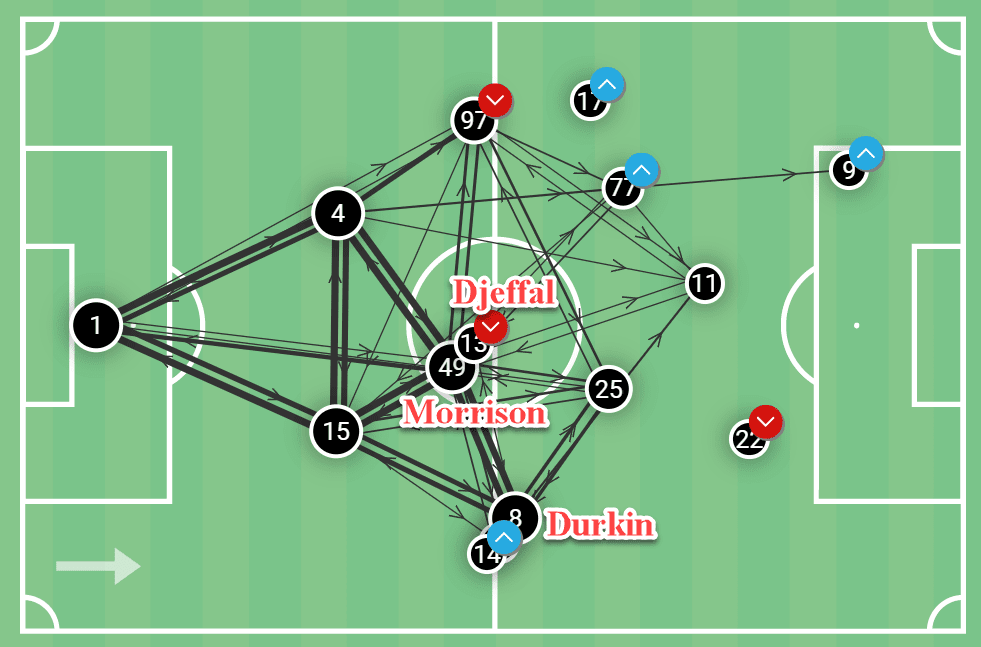
Against Orlando, DC United had the lion’s share of possession, boasting 53.15 percent of the ball during the match’s entirety. Regardless, most of the passes were made between the goalkeeper, the left-back, Durkin who had dropped wide, and Morrison in the pivot position.
Further up, the passing links looked feeble, to say the least. DC United really struggled to progress the ball up the pitch from the deeper areas.
In United’s most recent outing against Charlotte, their passing network somehow looked even worse. The shape and the links between the players were ghastly.
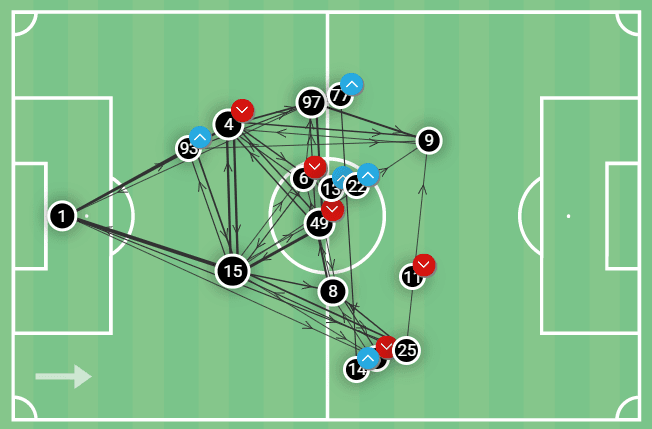
Without prior knowledge that Rooney had set his side up in a 4-3-3, it would be extremely difficult to take a guess at what shape the Black and Red were playing in.
In Rooney’s debut game, the only success the side had from progressive passes was through Durkin on the right flank, playing inside to the left-winger who came across the pitch, and one of the centre-forwards who constantly dropped to receive the ball.
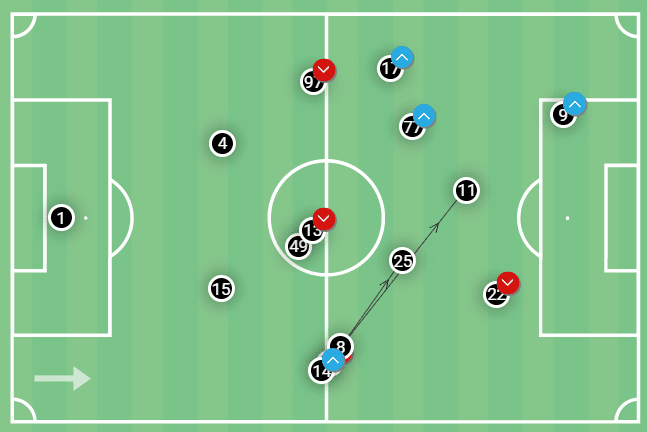
This brings into context why he wanted the American to play out wide, facilitating Morrison to take up a central position.
However, apart from Durkin’s influence, progressing the ball up the pitch became a major stumbling block for Rooney’s new side. In the 2022 campaign, DC United have averaged 67.08 progressive passes per 90. Against Orlando, this dropped significantly to 59, despite having the majority of the ball. DC United’s most recent game against Charlotte saw this improve slightly to 62 but it was still lower than the average.
The reasons behind their lack of ball progression were player quality and poor angles. Players were not creating good enough angles between the lines and, apart from Durkin and Morrison, nobody else was comfortable trying to play split passes into dangerous areas inside the opposition’s defensive block.
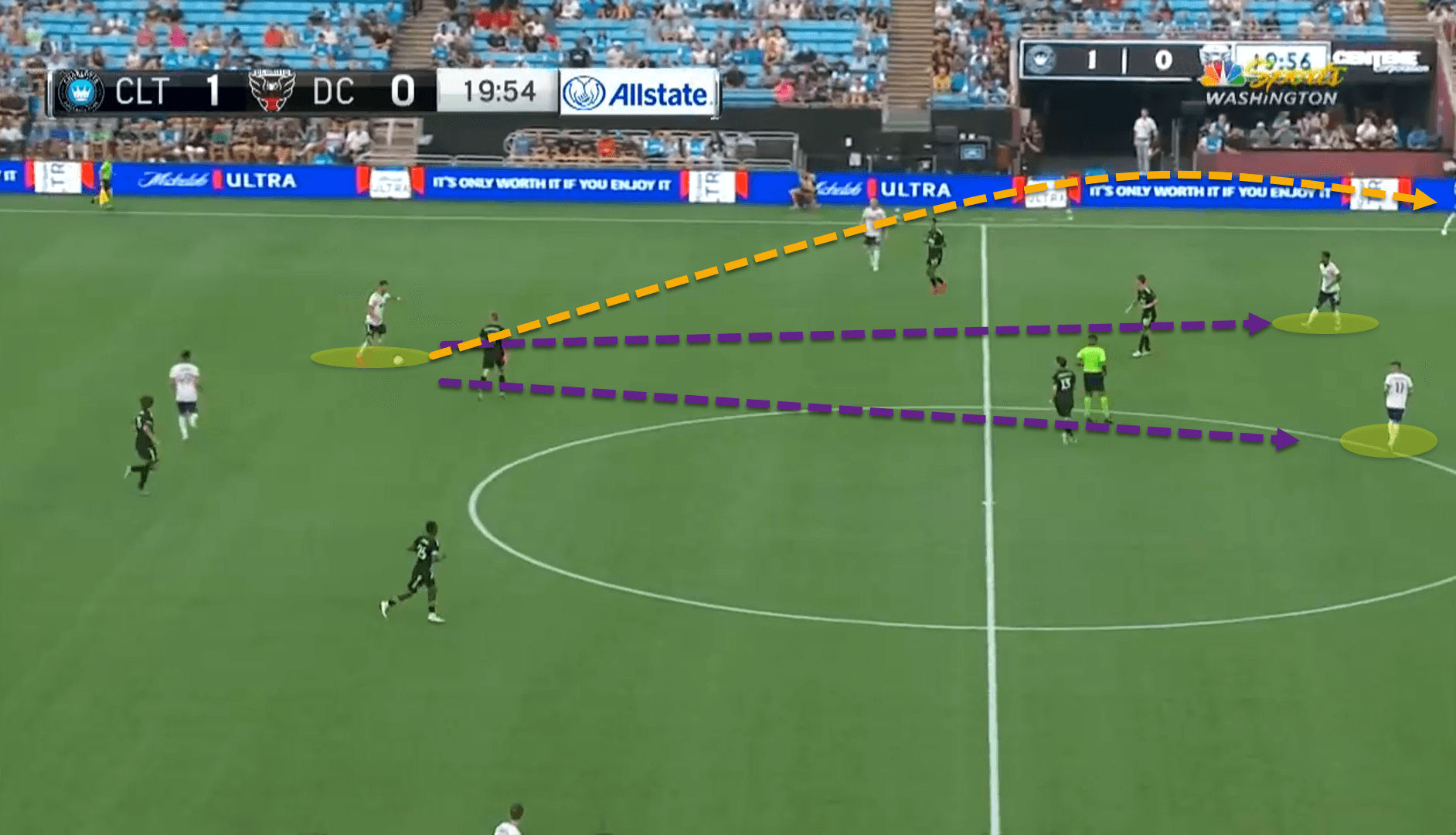
Here, DC United’s centre-back had just two progressive passing options to play to. The likelihood was that, had he attempted to pass to either, the ball would have been intercepted by a Charlotte midfielder.
The central defender ended up pumping it long, trying to find the run of the centre-forward in behind but the ball was lost. The distance between the backline and the midfield is far too large here. Progression on the floor would be nearly impossible. Players will need to start understanding what is required from them from a positional sense, should they want to develop into a possession-oriented side.
Regardless, to compensate for the lack of solid passing options through the centre, DC United constantly switched the play out wide before putting crosses into the box. This worked a treat against Orlando, helping the side to overturn a 1-0 deficit within the blink of an eye to take all three points in the end.
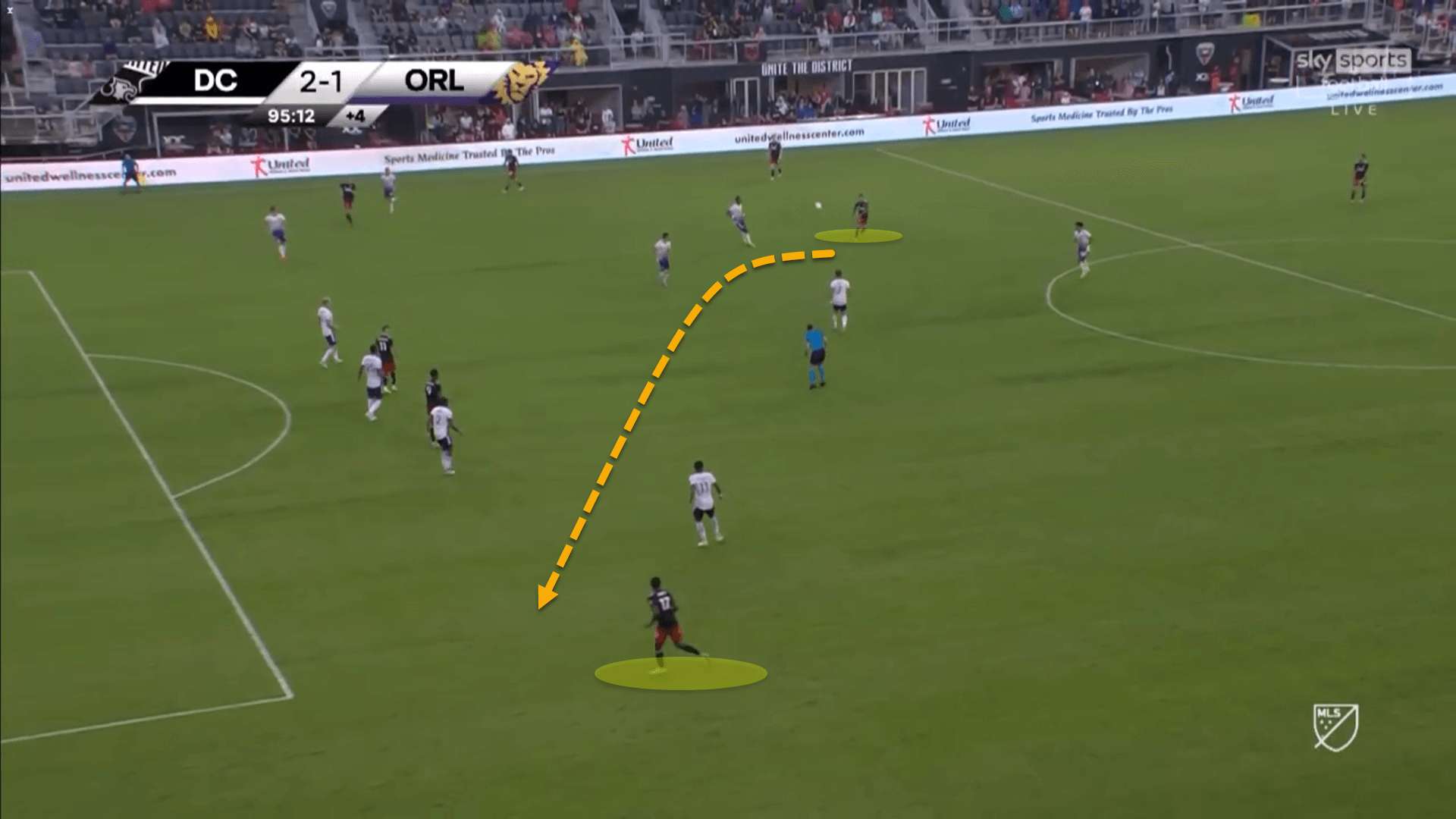
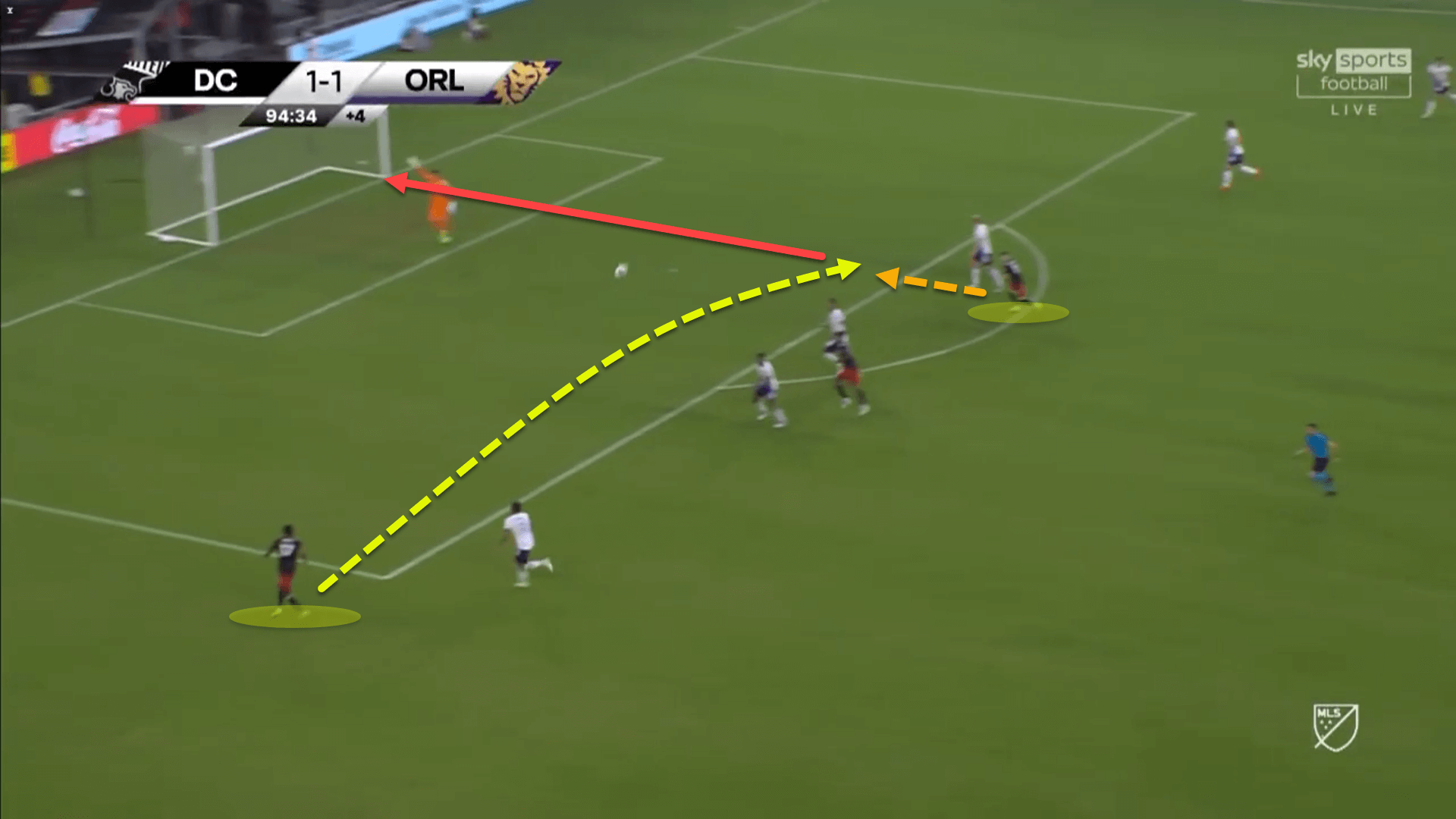
High pressing and a malleable low block
Along with all the prerequisites of being a modern coach, Rooney also wants his side to press high up the pitch.
At Derby, Rooney’s pressing scheme revolved around the centre-forwards forcing the opposition’s centre-backs wide where the Rams could then press aggressively and try to win back possession as quickly as possible. For instance:
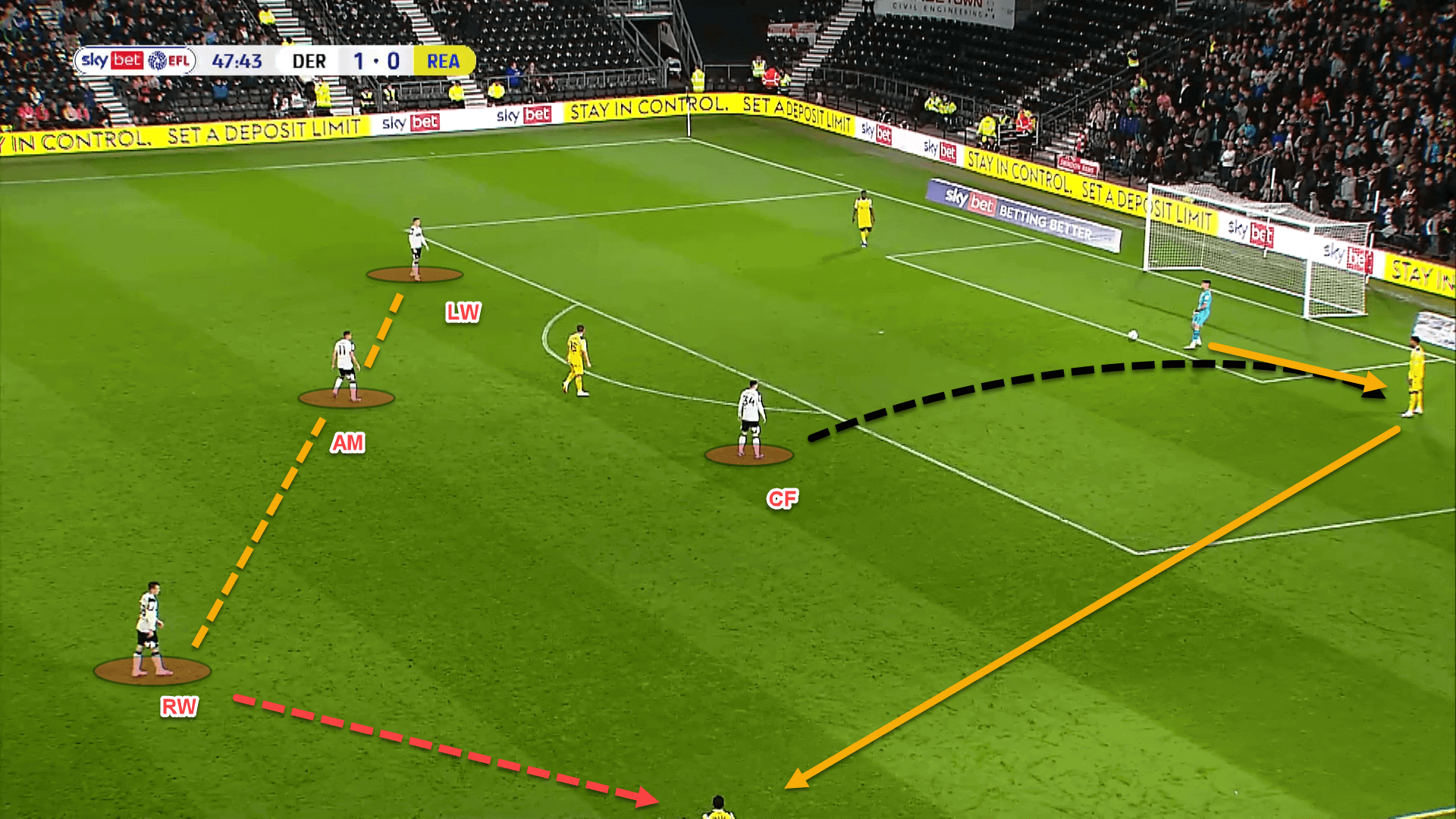
Already with DC United, the blueprint has been put into work. The first line of pressure must sit on the opponent’s deepest midfielder, blocking access to this player, while pressing at an angle to force the opponent to play out to the flanks.
We saw this within the first few minutes of Rooney’s debut game at the helm.
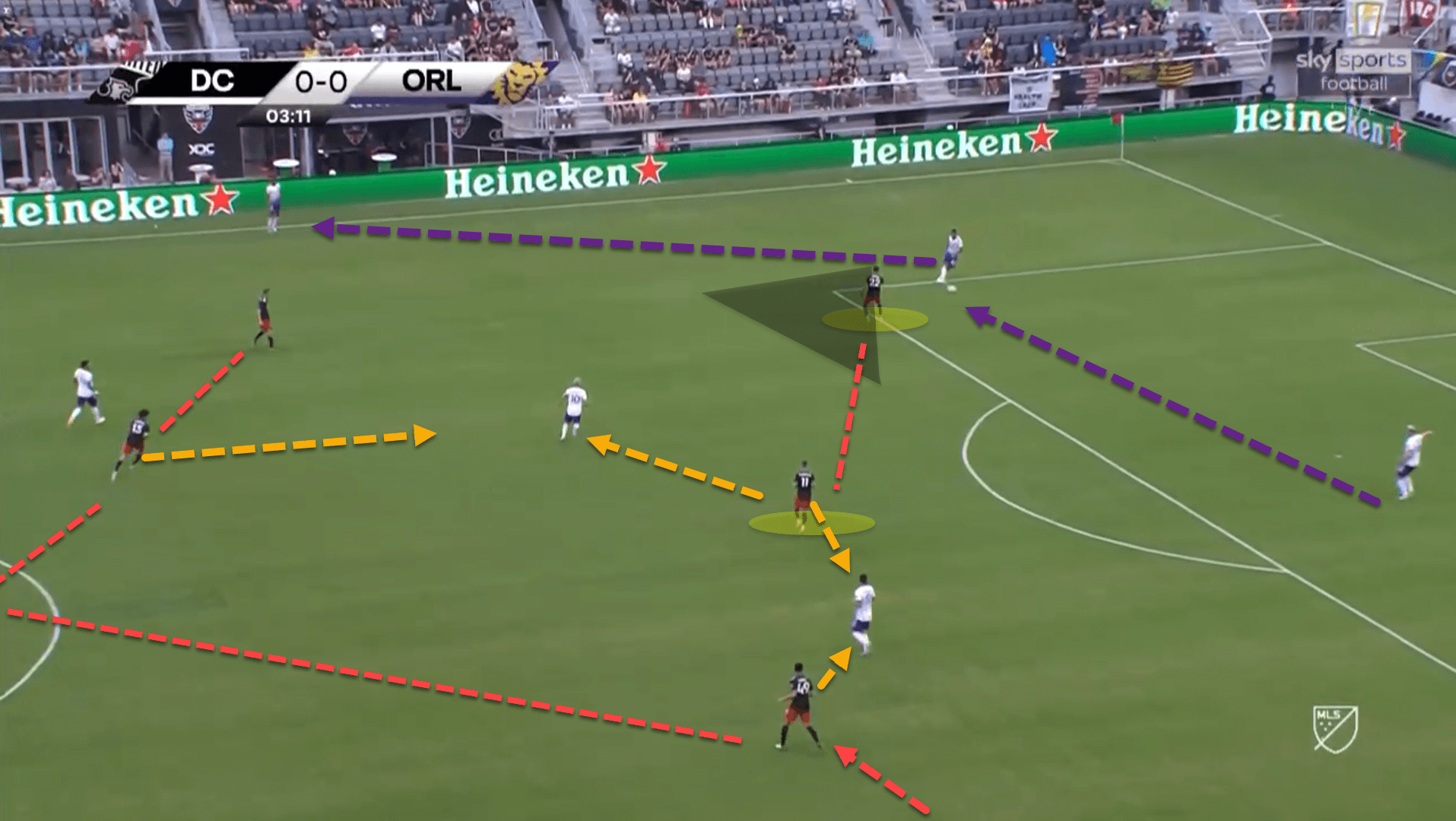
Here, DC United have ensured that the ball supply is completely blocked off to Orlando City’s double-pivot, with players ready to pounce on them should the centre-backs somehow play behind the pressure.
Meanwhile, the centre-forward has angled his run in an attempt to force the receiving central defender to play out to the right where DC United can then close down in numbers, using the touchline as an extra defender to recoup the ball.
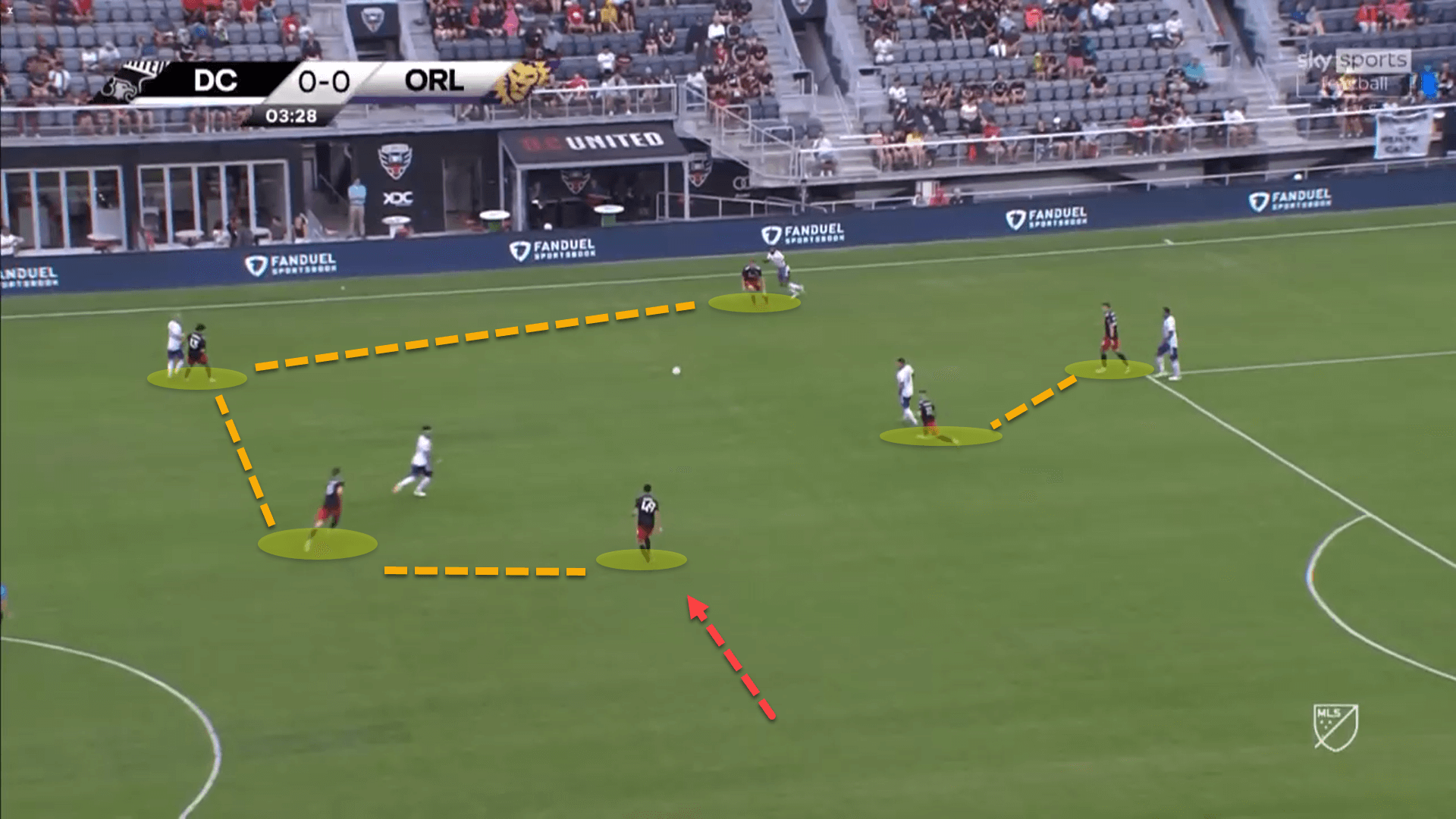
Following on from the last image, here, DC United have successfully forced Orlando wide. Morrison has tucked across to narrow the midfield line and defensive block overall, making it difficult for the MLS giants to play out of pressure.
Further down the pitch, when DC United’s high press is bypassed, Rooney has instructed his side to drop off into a compact mid-block. The midfield line must maintain their compactness and close-knit distance from one another to ensure that the opponent cannot pass the ball to players between the lines.
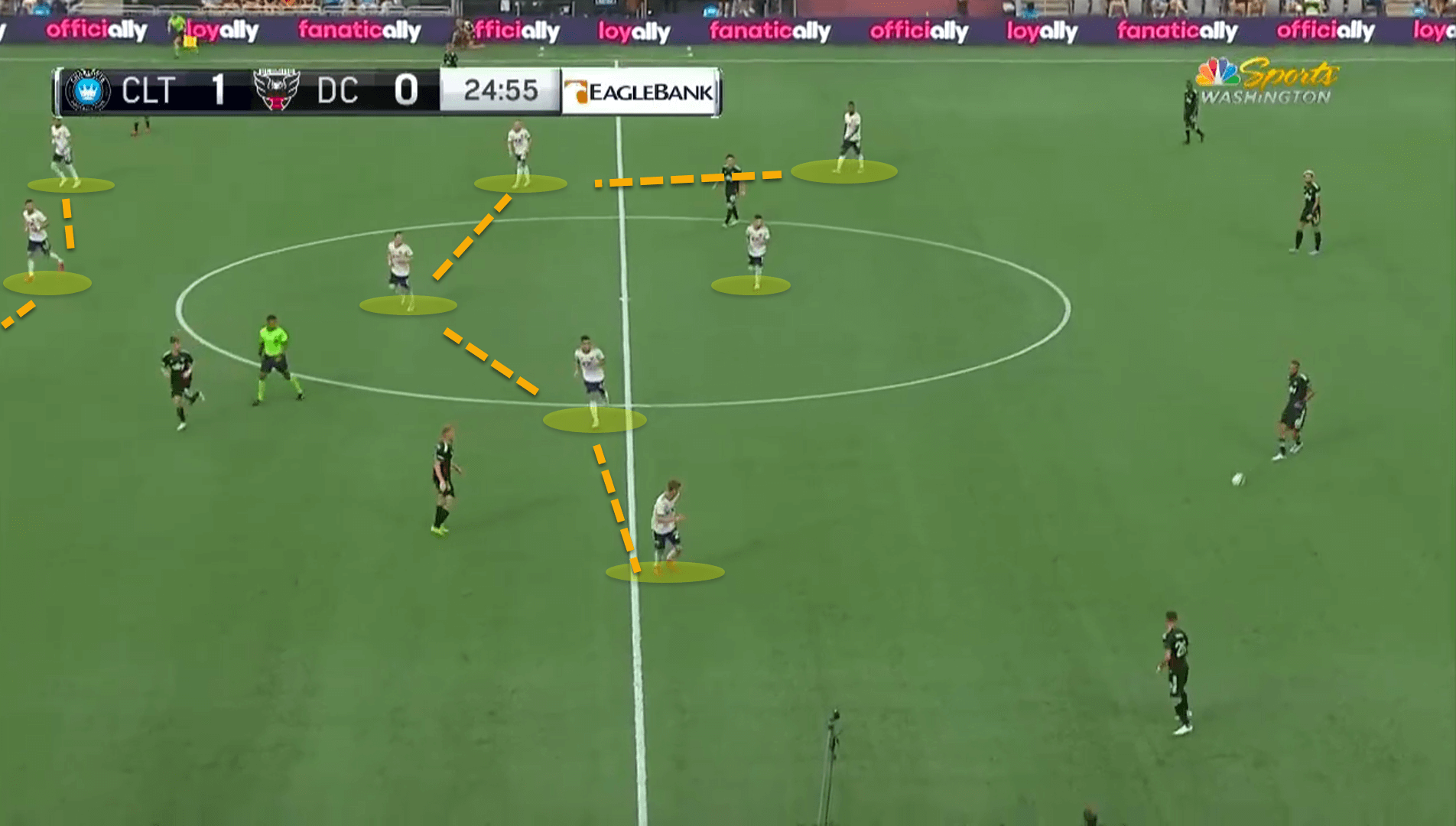
One of the most noticeable weaknesses in DC United’s defensive plan so far has been how their fullbacks are often isolated in the wide areas.
As they are really compact through the midfield, Orlando and Charlotte have both looked to attack down the sides by clipping through balls down the line, which worked in their favour.
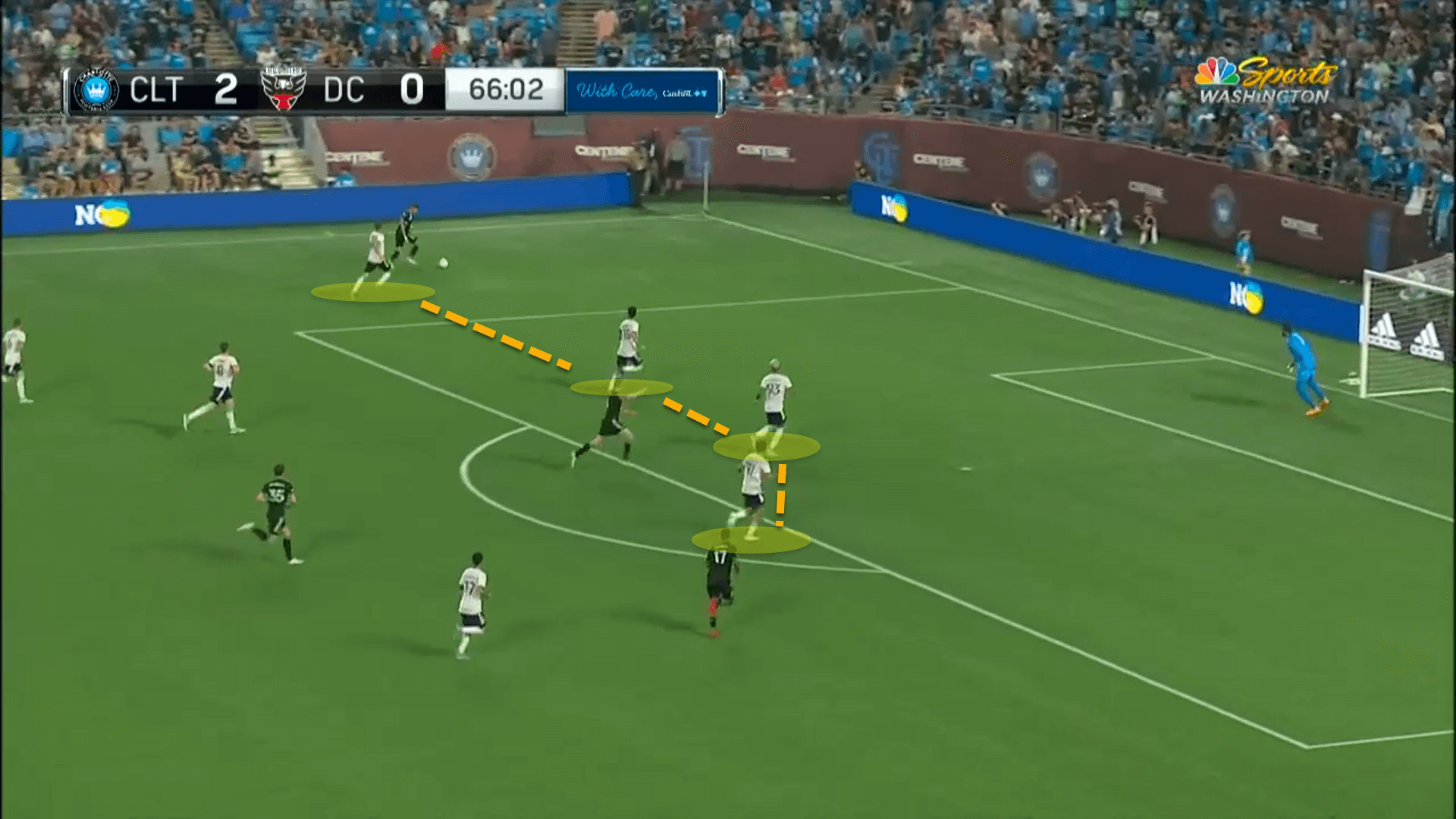
As the wingers are unable to track back, the nearest fullback was continuously dragged out to defend the cross, but leaving an imbalance inside the box.
Orlando and Charlotte created numerous chances each from these situations. DC United were utterly woeful at both stopping the crosses into the penalty area, and then at clearing the crosses away from danger.
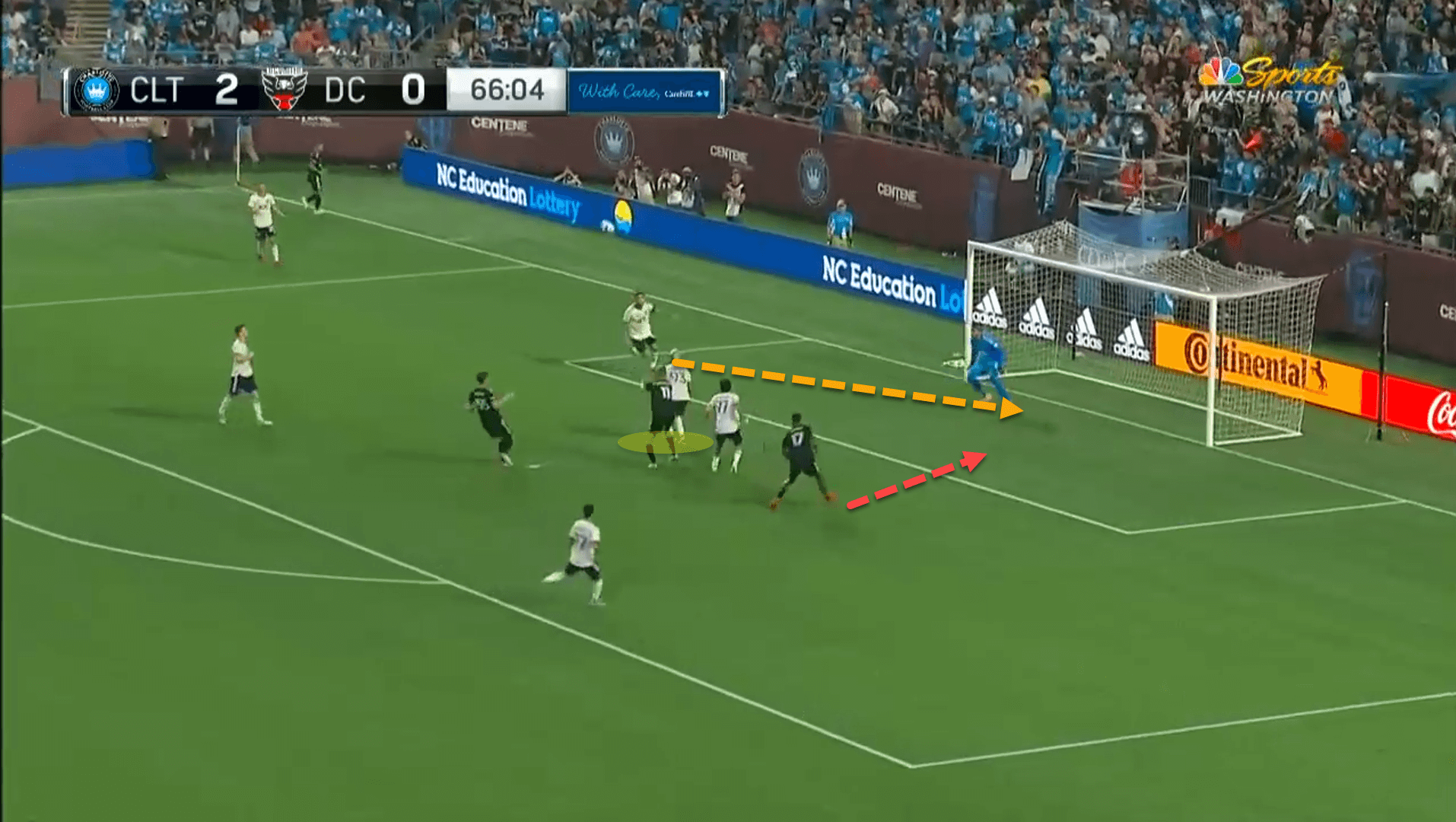
A team needs to be good at defending the flanks as well as the central areas of the pitch to ensure that the opposition cannot exploit them.
While DC United have been difficult to break down through the central areas, their opponents have found it incredibly easy to carve them open by playing balls into the channels and putting crosses into the box. Rooney needs to get to work quickly to put a stop to these weaknesses or else DC United are in for an incredibly bumpy ride to close out the year.
Conclusion
DC United are not a carbon copy of Derby County but there is a clear tactical blueprint that Wayne Rooney has been abiding by, taking elements from his system with the Rams which has been really noticeable thus far, just two games into his tenure at Audi Field.
A lot needs to be improved on. DC United are a work in progress but that work needs to be sped up quickly if the Black and Red are to avoid finishing at the bottom of the Eastern Conference during the regular season.
Rooney managed to create a wonderful spirit in the dressing room and a willingness to fight for the badge on the pitch at Pride Park. There’s no doubt he can do so again and instill pride into his new side.






Comments